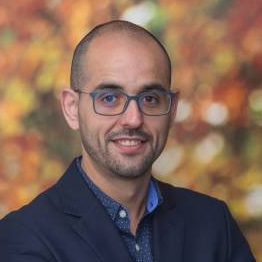28/04/2022
Published in
The Conversation
José Manuel Muñoz
researcher at the International Center for Neuroscience and Ethics (CINET) of the Tatiana Pérez de Guzmán el Bueno Foundation, and at the group Mente-Cerebro, Institute for Culture and Society (ICS), University of Navarra.
Gonzalo Arrondo
researcher at group Mente-Cerebro del Institute for Culture and Society, University of Navarra
 In recent years, there has been a trend towards the search for new
In recent years, there has been a trend towards the search for new neuroscience-based approaches that reinforce the didactic methodology of teachers. Especially in the compulsory stages of primary and secondary education. This is what some call "neuroeducation".
neuroscience-based approaches that reinforce the didactic methodology of teachers. Especially in the compulsory stages of primary and secondary education. This is what some call "neuroeducation".
However, interdisciplinary communication between neuroscience and Education is not easy. It is often contaminated by the presence of myths whose acceptance can be harmful to learning and even to health. Important works studies conducted with teachers from diverse geographic and cultural backgrounds (United Kingdom, Netherlands, Greece, Turkey, China) have studied the prevalence of these neuromyths within educational communities.
The types of myths are very varied and can be related to brain functioning in general, the relationship between biology and behavior, or directly to educational interventions supposedly based on the knowledge neuroscience.
The inactive brain
A widespread myth about how the brain works is the assertion that humans use only 10% of this organ. It would seem that if we know how to stimulate our inactive parts we can achieve greater intellectual performance.
Of course, this statement is categorically false: although in certain circumstances there may be some regions that are not working, at almost all times the brain is active in its entirety.
Furthermore, there does not seem to be a directly proportional relationship between the Degree of brain activation and its performance. We should not expect, therefore, that the use of training tools such as neurofeedback in healthy individuals is going to awaken our "sleeping brain" nor that, thanks to it, it is going to turn us into geniuses.
Sugar and performance
Among the neuromyths centered on linking behavior and biology, those that have to do with food and beverage intake are striking. Not only do they abound among teachers, but they are also highly endorsed by many parents.
It is common to hear that students who consume sugary drinks and snacks suffer from a loss of attention span, even hyperactivity. Nothing could be further from the truth if we look at the solid programs of study that shows that sugar has no significant effect on children's behavior and intellectual performance.
Although we do not deny the possible pernicious health effects of the abuse of sugary foods, it is important to point out that, in terms exclusively related to the pursuit of performance, the growing obsession of many parents and schools to control the intake of these products by students seems poorly justified.
Drinking to keep the brain from shrinking
Another widespread myth is the belief that not consuming a minimum of eight glasses of water a day can shrink the brain and impair performance.
Again, the belief is false: the amount of water ingested daily should always include that contained in food. Moreover, excessive water intake can lead to potentially fatal overhydration, as a number of fatal cases have shown.
So, as this New York Times column rightly explains, "No, you don't have to drink eight glasses of water a day."
Pseudoneuroscience
The examples discussed so far may seem childish or clearly outdated, even if the programs of study indicate that they are still present in classrooms and popular folklore.
The third subject of myths are related to educational interventions based on pseudo-neuroscience and are therefore more difficult to detect and refute, as well as being very harmful to learning and classroom functioning.
Perhaps the prototype among these myths is the proposal that each person has a learning style derived from his or her brain structure and function. Who has not heard an acquaintance say that he or she was more verbal or more visual in learning? Or that he or she was more right or left hemisphere?
It is a myth to think that some people have a fundamentally creative or holistic subject mental processing or, on the contrary, analytical, and that this also derives from a predominant functioning of the left or right hemisphere, respectively.
On the one hand, the brain always works in a coordinated manner. On the other hand, people, depending on the problem to be solved, will use more holistic or analytical strategies. Similarly, it has been shown time and again that there is no systematic individual affinity for a particular subject of material (verbal vs. visual vs. manipulative) nor, especially, that presenting learning materials to each person according to these preferences improves performance.
Therefore, using psychological assessment tests in classrooms aimed at assessing these learning styles in students and encouraging teachers to create multiple materials that match these styles is a wasted expense of time, effort and resources that could be used on proven learning methods and individualized attention.
Although there are many other neuromyths in the world educational, in this article we wanted to highlight some of the most striking and harmful ones.
The prevalence of these myths should make us reflect on the extent to which we should be looking hard for miracle solutions that will finally give our system a definitive boost educational.
Neuroscience, at least in the short or medium term deadline, will not, in our opinion, be that solution. Perhaps, after all, our teachers and professors, most of them magnificent professionals, do not need paternalistic or pseudoscientific recommendations.
This article was originally published in The Conversation. Read the original.
